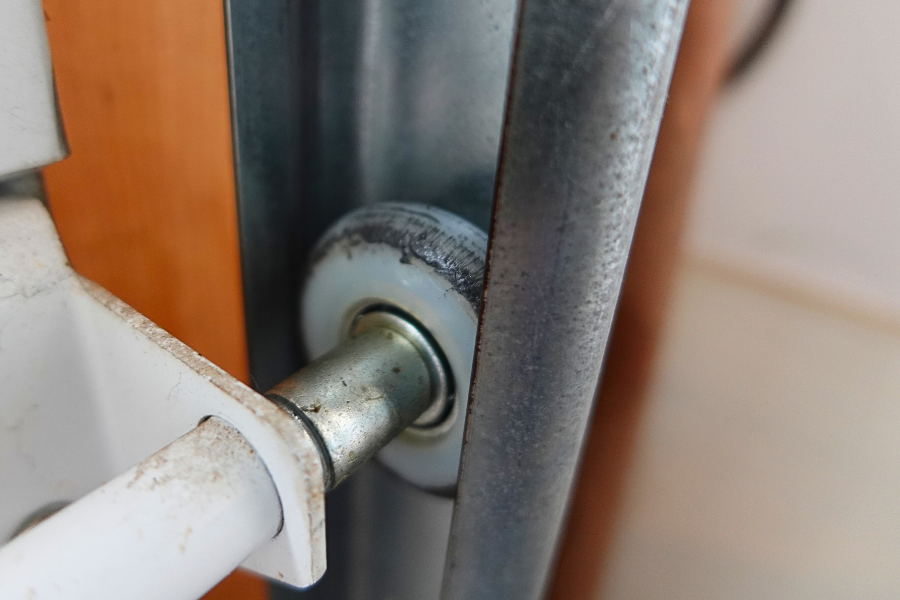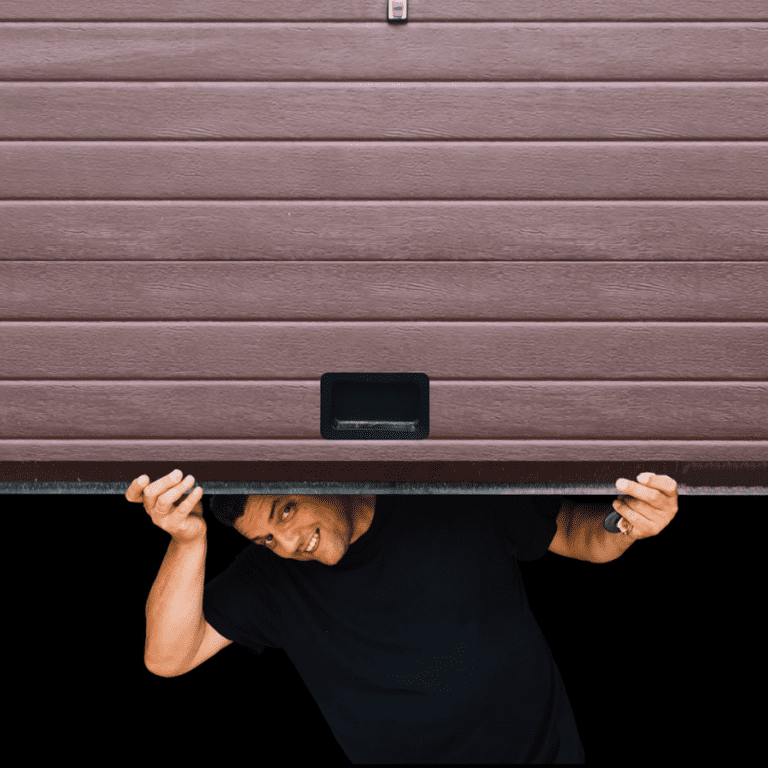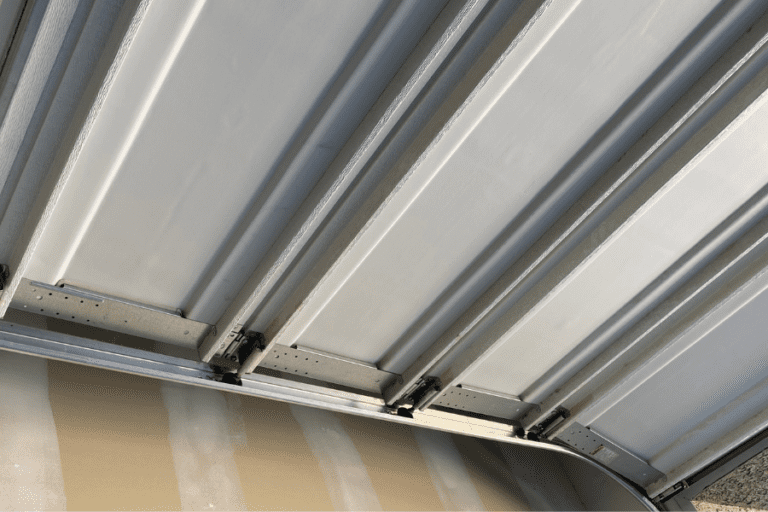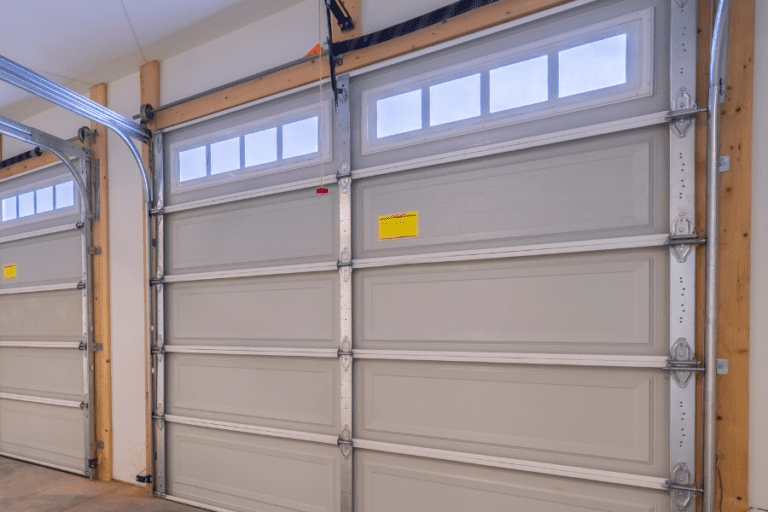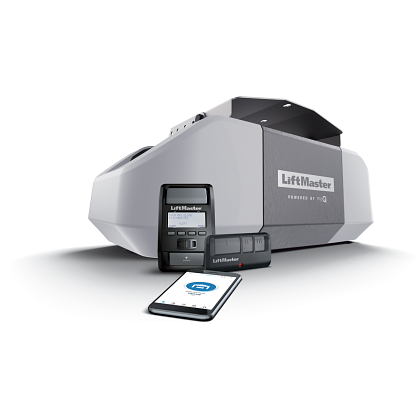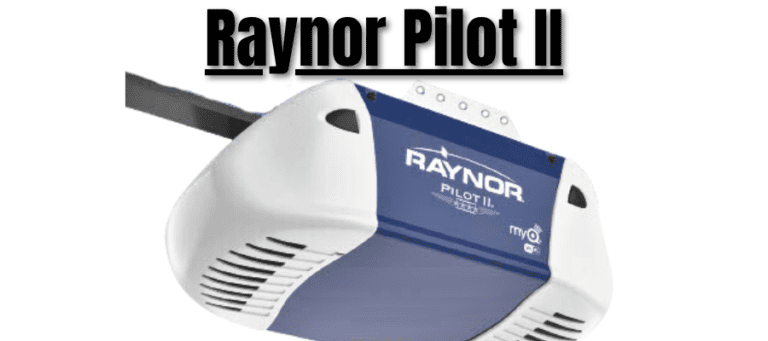Ultimate Garage Door Maintenance Checklist Guide
Maintaining your garage door is important for ensuring its smooth and safe operation. Regular upkeep not only prolongs its lifespan but also prevents costly repairs that may arise due to neglect. In this guide, we’ll provide you with all the necessary steps and tips to maintain your garage door and keep it working safely for years to come.
Key Takeaways:
- Regular garage door maintenance is crucial for optimal operation.
- A comprehensive garage door maintenance checklist is necessary to ensure thorough upkeep.
- Proper lubrication and cleaning of garage door components are essential for smooth, quiet, and safe operation.
- Regular inspection and tune-up of garage door parts prevent sudden failures and potential safety hazards.
- Choosing the right lubricant for your garage door and garage door opener is important for the best performance.
 Top Roller Bracket
Top Roller Bracket Garage Door Roller
Garage Door Roller
Garage Door Tune-Up to Maintain Optimal Operation
Regular check-ups are important for maintaining the functionality and longevity of your garage door. By adding these garage maintenance tips into your routine, you can prevent costly repairs and ensure safe and efficient operation. Here are some garage door maintenance tips that you can do every 2 months (6 times a year) and will only take a few minutes to complete:
- Check the hardware: Inspect hinges, rollers, tracks, and other hardware for any signs of wear and tear. Tighten any loose bolts or screws, and replace any damaged components immediately.
- Lubricate moving parts: Proper lubrication of garage door parts is crucial for smooth and quiet operation. Apply a high-quality lubricant to the rollers, hinges, and tracks, and avoid using grease, oil, or WD-40, as they can attract dirt and debris.
- Test safety sensors: Test your garage door’s safety sensors regularly to ensure they are functioning correctly. Place an object in the door’s path and check if it reverses immediately.
- Inspect weather seals: Check the weather seal along the jambs and header to make sure it is sealing any gaps between the jambs and the garage door. Also, check the bottom of the garage door seal to ensure it is in good condition. Replace any worn or damaged weather seals to prevent drafts and water from entering your garage.
By doing these check-ups to your garage door every other month you’ll catch any parts that may be degrading and you’ll be able to replace them before they become an issue. A little preventive garage door maintenance can save you from costly repairs and ensure safe and smooth operation. You’ll also increase the overall lifespan of your garage door and garage door opener.

Cleaning and Lubricating Garage Door Tracks
Having clean garage door tracks will ensure the smooth operation of your garage door. Over time, dust, debris, and grease can accumulate on the tracks, causing the door to squeak or the rollers not to roll properly. If you’ve never used WD-40, grease, or oil in the garage door tracks then this may not need to be done very often. However, if upon inspecting the tracks you see some dirt build up or grease then cleaning and lubricating the tracks is a good idea.
Here’s how you can clean your garage door tracks:
- Begin by closing the garage door and disconnecting the automatic opener.
- Using a household cleaner or degreaser, dampen a cloth and wipe down the tracks to remove any accumulated dirt or debris.
- After cleaning, dry the tracks with a clean cloth.
Here’s how you can lubricate your garage door tracks:
- Spray a small amount of lubricant on the inside of the vertical and horizontal tracks —avoid using excessive amounts, as this can attract more dirt and debris.
- Take a dry cloth and wipe the cloth along the full length of the tracks. This will clean up any extra lubricant in the tracks.
- After wiping the tracks down, open and close the garage door several times to make sure everything is rolling smoothly.
By cleaning and lubricating your garage door tracks when needed, you can avoid having excessive dirt build up in the tracks which in turn will keep the door rollers moving smoothly in the tracks and prevent any unwanted squeaks or malfunctions.
Performing a Garage Door Tune-Up
A garage door tune-up is a comprehensive maintenance process that involves checking, adjusting, and lubricating all the moving parts of your garage door. This tune-up should be performed at least once a year to ensure that your garage door is operating at its best. Here are the steps to follow:
- Disconnect the power: Start by unplugging your garage door opener. This is so the operator doesn’t accidentally run while you’re working around the garage door.
- Check the rollers: Inspect the rollers & make sure the wheels of the rollers spin properly and aren’t missing any ball bearings. Note any that may need to be replaced. Read our Ultimate Guide for Garage Door Rollers for more information.
- Check the hinges: Inspect all of the door hinges. Check that all of the fasteners holding the hinges are tight. Check for stress cracks in the hinges and note any that may need to be replaced. Hinges are numbered (#1, #2, #3, etc.) so note which number you may need. Check out our Guide to Garage Door Hinges for more information.
- Check the cables: Take a cloth, put it around the door cable, and pull the cloth from the bottom of the door to the top. If there are any frays in the cable the cloth will get caught on the cable indicating that the cable may need to be replaced. Replacing door cables can be dangerous if you are not familiar with the process so we advise that you call a professional to do this for you if you are not comfortable doing so.
- Check the balance: Using the release mechanism, operate the garage door manually and check its balance. If the door is difficult to open or close or if it does not stay open, then the garage door is not balanced and will require adjustment. An unbalanced garage door will shorten the life of your garage door opener. We suggest that you have a professional adjust the springs on the garage door since it can be dangerous if not done properly.
- Lubricate the moving parts: Apply a silicone-based lubricant or a synthetic lubricant to the hinges, rollers, tracks, and springs. Avoid using WD-40 or other petroleum-based lubricants, as they can attract dirt and debris, causing more harm than good.
- Inspect the bottom door seal: Depending on the climate where you live the bottom door seal can last for about 5-7 years before it should be replaced. Over time the seal can harden, crack, or tear and no longer provide the optimal seal. Having a good seal between the door and the floor will help prevent small animals, insects, dirt, and water from coming into your garage and will improve energy efficiency.
- Test the safety features: Test the safety features of your garage door opener, including the auto-reverse mechanism, the photoelectric sensors, and the manual release handle. If any of these features do not work correctly, seek professional assistance.
Performing a garage door tune-up will help prevent costly repairs and increase the life of your garage door and garage door operator. If you are unsure about performing any of these steps yourself, it’s always best to seek the help of a professional garage door technician.

Maintaining Garage Door Springs
Garage door springs are responsible for lifting and lowering the door, making them a critical component of your garage door. Proper maintenance of your garage door springs helps prevent sudden spring failures, which can result in damage to the garage, damage to a vehicle, or serious personal injury. Here are some tips for maintaining garage door springs:

Inspect Your Springs Regularly
Inspection of your garage door springs every 6 to 12 months is a good rule of thumb to identify any signs of wear or damage. Look for any signs of rusting or cracking. If you notice any damage, it’s best to call a professional to assess the situation and make any necessary repairs or replacements.
Keep Springs Clean and Lubricated
Dirt and debris can accumulate on your garage door springs, affecting their performance and lifespan. Use a damp cloth or brush to remove any debris from the springs. Then, apply a silicone-based or synthetic-based lubricant to keep them operating smoothly. Spray the lubricant along the entire spring and then use a cloth to wipe away any excess lubricant. Due to the high tension the springs are under, a coating of lubricant on a scheduled basis will ensure that they will work smoothly and you’ll get the most life out of the springs. Avoid using oil-based lubricants, as they can attract dirt and impede the springs’ performance.
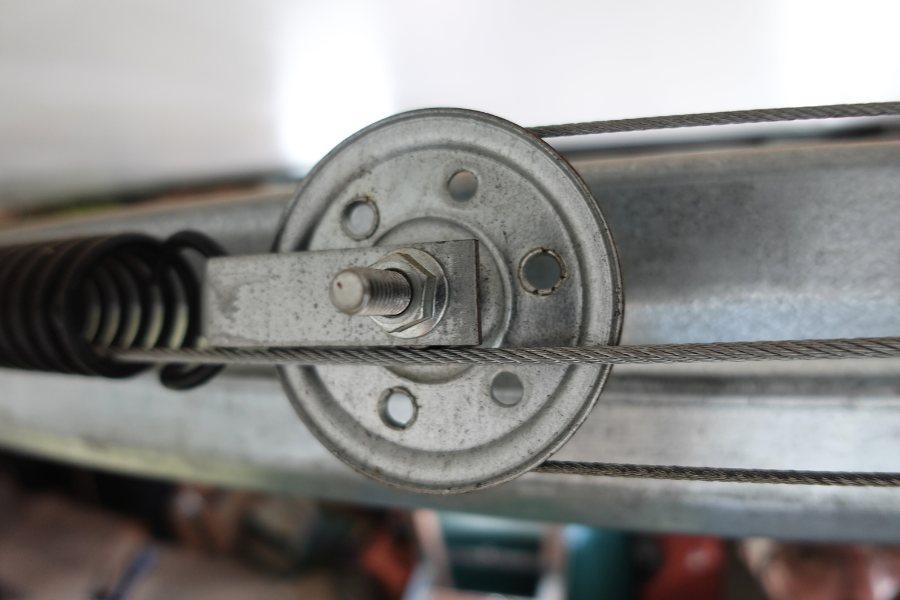
Know When to Replace Your Springs
Garage door springs have a limited lifespan and will eventually need to be replaced. The average lifespan of garage door springs is about 10,000 cycles or seven years. A cycle is a complete opening and closing of the garage door so you can calculate an approximate time frame for how long your door springs may last. So if you open/close your garage door 4 times a day then that would be 1,460 cycles in a year or 10,000 cycles in 6.8 years. If you’re close to the timeframe that you’ve calculated then you may want to consider replacing the springs so it doesn’t happen when you least expect it (it usually happens when you’re in a hurry to go somewhere and can’t get out of your garage because the springs broke).
We highly recommend that you call a professional to assess the situation and have them change the springs unless you are knowledgeable about the replacement of springs and the dangers that are involved. You may want to also consider upgrading your springs to a higher cycle (such as 20,000 cycles). Ask the service company to price this for you as it shouldn’t be too much more to do so.
By following these simple tips for garage door spring maintenance, you can ensure the safe operation of your garage door for years to come and avoid any unwanted surprises.
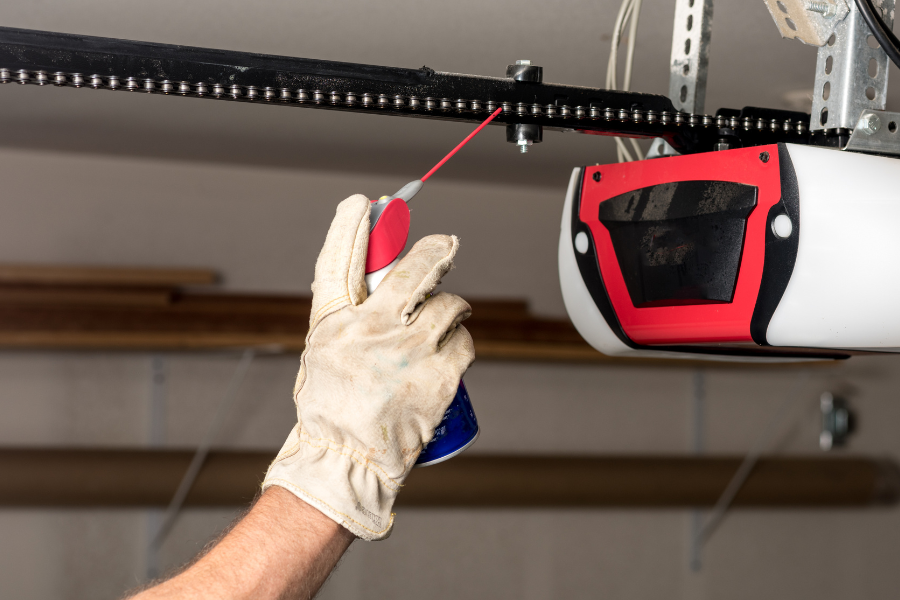
Lubricating Garage Door Opener
Consistent lubrication of your garage door opener is essential for smooth and safe operation. The garage door opener contains several moving parts that require lubrication to reduce friction and prevent wear and tear. If you lubricate the operator every 12 months then it can also prolong the lifespan of your garage door opener and you’ll become aware of any issues before they become a problem.
Before applying any lubricant, make sure to clean the opener’s chain or screw drive thoroughly to remove any dirt or debris. Then, apply a small amount of lithium-based garage door lubricant to the opener’s chain or screw drive.
Keep in mind that excessive application of lubricant can attract dirt and debris, leading to buildup, so only apply a thin layer. Also, avoid using WD-40 or other general-purpose lubricants, as they can cause damage to your garage door opener’s components.
While you are focused on the garage door opener take a minute and wipe off the safety sensors at the bottom of the garage door. These sensors are like magnets for spider webs, dirt, and grass clippings since they are mounted so close to the floor. Take a cloth and wipe it down so the infrared beam that shoots from one sensor to the other is unimpeded.
Overcoming Squeaking Garage Doors
Dealing with a squeaky garage door can be bothersome and disrupt the peace and quiet of your home. Fortunately, there are several effective solutions to eliminate those annoying sounds and restore quiet operation to your garage door.
Common Causes of Squeaky Garage Doors
Garage doors squeak due to various reasons, including:
- Worn-out rollers or hinges
- Lack of lubrication
- Loose hardware
- Imbalanced door
Identifying the source of the noise is the first step to solving the problem. It may require some investigation and troubleshooting to pinpoint the exact cause of your squeaking garage door.
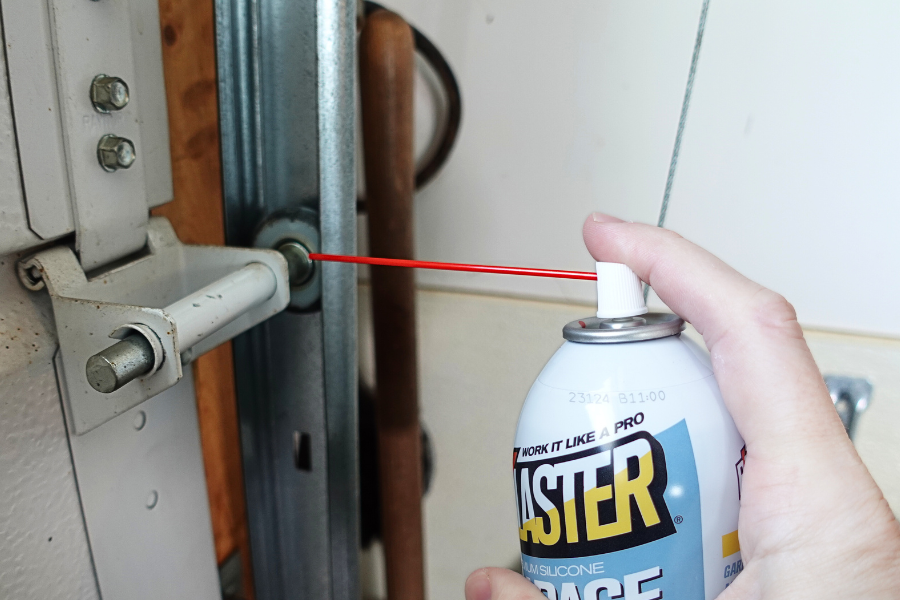

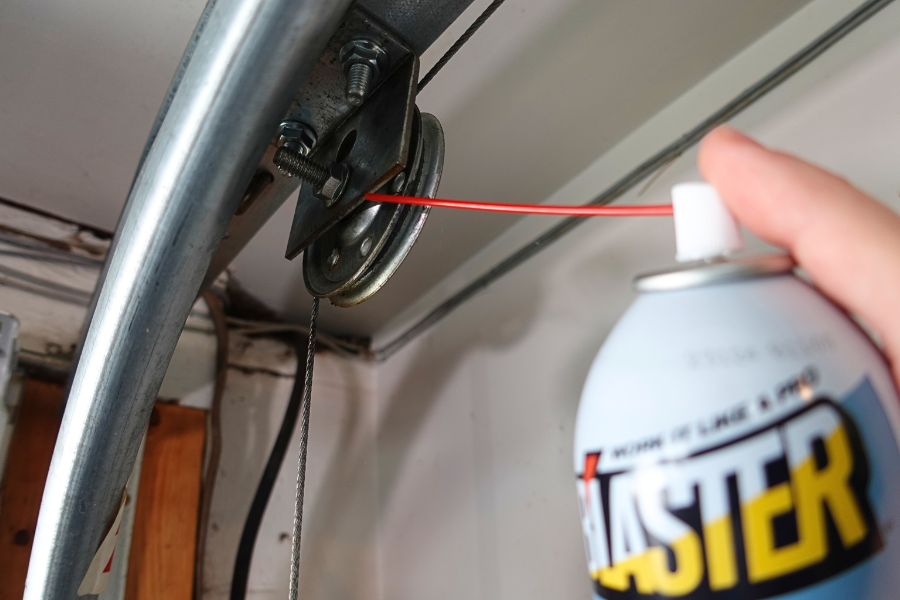
Effective Solutions for Squeaky Garage Doors
Once you have identified the cause of the noise, here are some effective solutions:
- Lubricate the moving parts of the garage door. Apply a high-quality silicone spray lubricant to the rollers, hinges, springs, and tracks to reduce friction and eliminate noise. It is important to avoid using WD-40 or petroleum-based products as they can attract dirt and cause damage to the moving parts over time.
- Tighten all hardware components on the garage door and track. Check all bolts, screws, and nuts to ensure they are tight and secure.
- Replace the worn-out rollers or hinges. Over time, these parts can become worn out or damaged, causing the door to squeak. Replace these parts to restore smooth and quiet operation to your garage door. Find out more on how to replace worn-out garage door hinges by reading our Guide for Garage Door Hinges.
- Check the balance of the garage door. An imbalanced door can cause unnecessary strain on the motor and lead to loud noises. Test the balance of your garage door by closing the garage door and then disconnecting the opener by pulling the emergency release handle and manually operating the door. If it doesn’t move smoothly, it may need to be professionally balanced.
By following these simple steps, you can eliminate the noise and ensure that your garage door operates smoothly and quietly.
Choosing the Right Lubricant for Your Garage Door
When it comes to garage door maintenance, choosing the right lubricant is crucial. Not all lubricants are created equal, and using the wrong one can possibly damage your garage door or at the very least degrade the performance over time. That’s why experts recommend using a high-quality silicone or synthetic lubricant.
Benefits of Silicone Lubricants
Silicone lubricants are specially formulated to withstand the extreme temperatures and pressures that garage doors are exposed to. They provide long-lasting lubrication and protect against rust and corrosion.
Preventing Rust and Corrosion: Silicone garage door lubricants create a protective barrier that helps prevent rust and corrosion on metal components, extending the lifespan of the door and its parts.
Moisture Resistance: They are known for their moisture-resistant properties, making them ideal for garage doors exposed to varying weather conditions.
Temperature Tolerance: Silicone lubricants can withstand extreme temperatures, ensuring continued performance in both hot and cold climates.
Long-Lasting: Silicone-based lubricants tend to be long-lasting, reducing the frequency of reapplication compared to some other lubricants.
Tack-Free Film: Many silicone garage door lubricants leave a tack-free film that does not accumulate dust and dirt, keeping the door and its components clean.
Benefits of Synthetic Lubricants
A synthetic lubricant, such as CRC Chain and Cable Fluid, is a specialized lubricating product formulated with synthetic compounds rather than traditional mineral oils or petroleum-based lubricants. These synthetic lubricants are designed for specific applications, such as lubricating chains and wire ropes, and offer several key benefits.
- High Performance: Synthetic lubricants are engineered to provide superior performance compared to conventional lubricants. They often exhibit exceptional lubricating properties, reducing friction and wear in high-stress environments.
- Temperature Stability: They have a broad temperature range and can operate effectively in both extreme cold and high-temperature conditions. This makes them suitable for applications in diverse climates.
- Resistance to Breakdown: Synthetic lubricants are less prone to breaking down or deteriorating over time, ensuring long-lasting lubrication and reducing the need for frequent reapplication.
- Reduced Maintenance: Due to their longevity and performance, synthetic lubricants can contribute to reduced maintenance costs and downtime in industrial and mechanical systems.
- Environmental Benefits: Some synthetic lubricants are environmentally friendly, as they may have lower toxicity and are less harmful to ecosystems compared to traditional lubricants.
- Specialized Formulations: Synthetic lubricants come in various specialized formulations tailored to specific applications, such as chain and cable lubrication, ensuring optimal performance in those scenarios.
But with so many different types of lithium lubricants on the market, how do you know which one to choose? Here are a couple that we recommend:
Blaster Garage Door Lubricant (silicone-based): this is a good all-around lubricant that is cost-effective. This lube may not last as long as the others so more applications will be needed throughout the year.
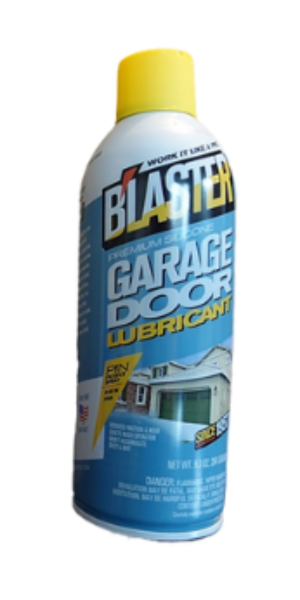
CRC Chain & Wire Rope Lubricant (synthetic lubricant): excellent lubricant with long-lasting application. More expensive than most lubricants but due to the longevity fewer applications will be needed throughout the year.

By choosing the right lubricant for your garage door, you can ensure that it operates smoothly and efficiently for years to come. Regular application of lubricant is one of the easiest and most effective ways to maintain your garage door and prevent costly repairs.
Garage Door Maintenance Checklist Schedule
- Regular Check-Ups: every 2 months – quick 10-minute inspection of door and opener
- Clean & Lubricate Tracks: once a year or when needed
- Lubricate Garage Door & Opener: every 6 – 12 months
- Garage Door Tune-Up: every 12 months
- Maintaining Garage Springs: every 6 – 12 months
- Replace Garage Springs: approximately every 6-7 years (or when required)
Conclusion
By following the ultimate garage door maintenance checklist guide, you can ensure that your garage door remains in optimal condition for many years. Regular inspections, cleaning, lubrication, and tune-ups are all essential for preventing costly repairs and ensuring the safety and functionality of your garage door.
Remember to:
- Conduct regular inspections to identify and address any potential issues early on.
- Clean and lubricate the garage door tracks to ensure smooth and quiet operation.
- Perform a thorough tune-up to keep all components functioning properly.
- Maintain the garage door springs to avoid sudden failures and safety hazards.
- Lubricate the garage door opener for smooth and efficient operation.
- Choose the right lubricant, such as a high-quality lithium lubricant, for optimal performance.
- Prevent and reduce noisy garage doors by addressing the common causes of excessive noise.
As an Amazon affiliate we earn a commission from purchases through product links.



